Remember when television was about genuine chemistry and quick wit instead of special effects and shock value? The 1970s were truly the golden age of comedy duos who could keep us glued to our screens with nothing but their perfect timing and hilarious interactions. These iconic pairs created magic with just a look, a perfectly timed comeback, or a running gag that had us in stitches week after week. Let’s take a nostalgic trip back to simpler times when these dynamic duos made us laugh until our sides hurt.
1. Archie and Edith Bunker (All in the Family)
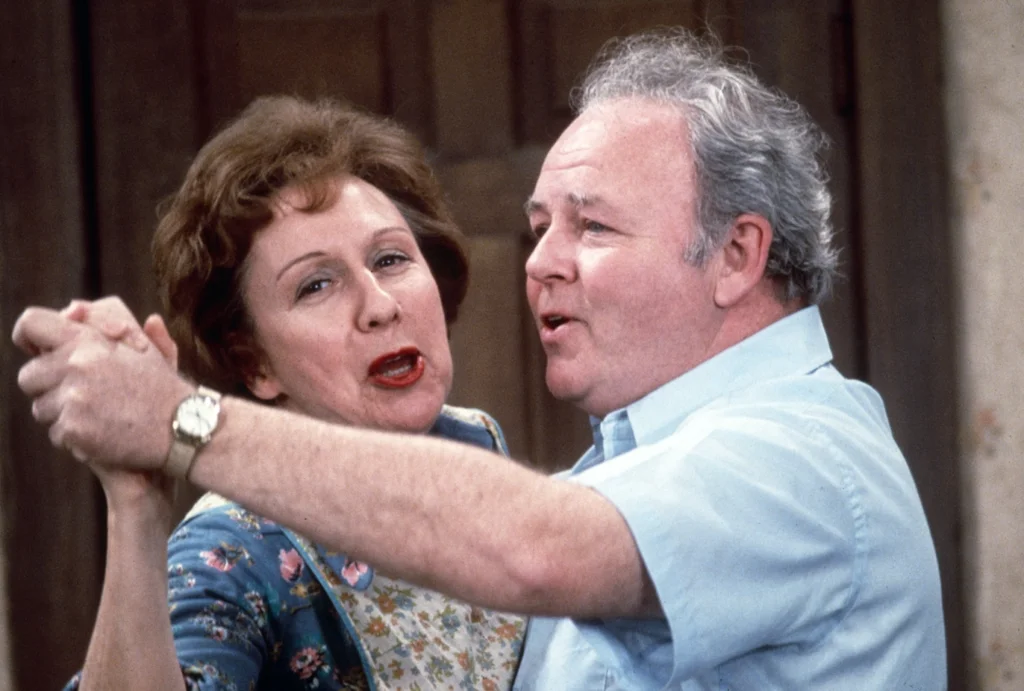
Carroll O’Connor and Jean Stapleton created television history with their portrayal of the lovably cantankerous Archie Bunker and his sweet, ditzy wife Edith. Their interactions became the heart and soul of “All in the Family,” with Archie’s gruff, politically incorrect comments constantly countered by Edith’s innocent wisdom and that unforgettable high-pitched voice. The chemistry between O’Connor and Stapleton was so authentic that viewers couldn’t help but feel like they were watching real conversations unfold in that iconic living room with those two matching chairs. Even 50 years later, Variety looks back at the resounding legacy of this series, led by these iconic characters.
Their comedy routine often followed a familiar pattern—Archie’s stubborn opinions leading to outrageous pronouncements, followed by Edith’s unexpected perspective that somehow cut through his bluster. Remember how Edith would squeak “Oh, Archie!” whenever he went too far, or how Archie would lovingly but impatiently call her a “dingbat”? Despite the surface friction, there was always an underlying current of genuine affection between them that made their relationship not just funny but touchingly real to millions of American households who saw reflections of their own family dynamics.
2. Laverne and Shirley
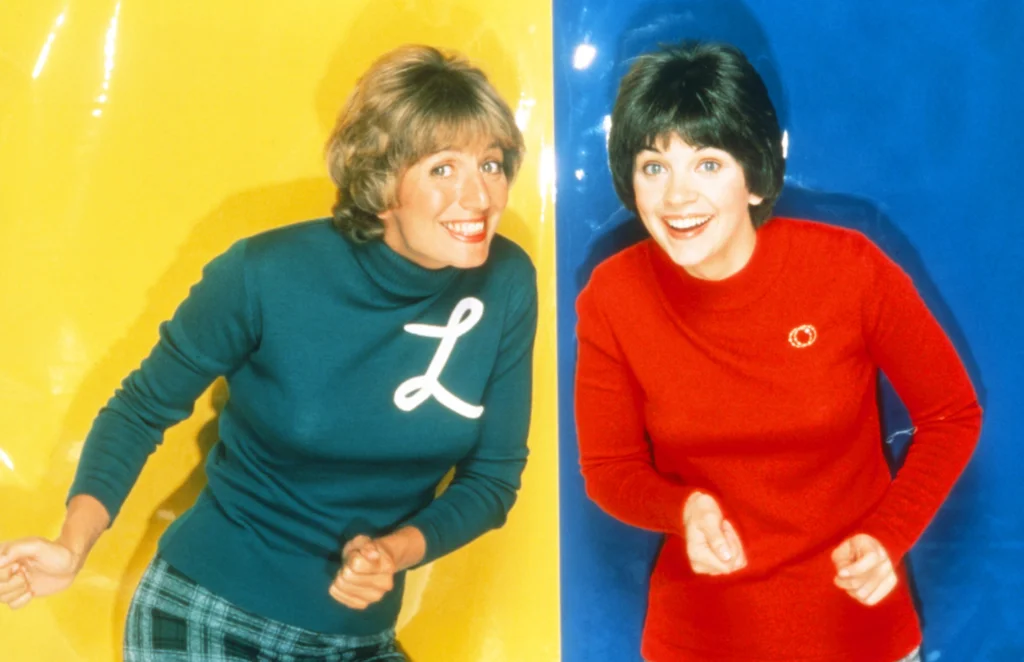
Penny Marshall and Cindy Williams brought working-class heroines to primetime as roommates Laverne DeFazio and Shirley Feeney, two bottle-cappers at Milwaukee’s fictional Shotz Brewery. Their contrasting personalities—Laverne’s street-smart toughness versus Shirley’s more proper, optimistic demeanor—created the perfect comedy friction that powered eight successful seasons. Their apartment antics, workplace escapades, and that unforgettable “Schlemiel! Schlimazel! Hasenpfeffer Incorporated!” opening sequence became part of our collective memory, representing the unbreakable bond of female friendship. As to the bond between the actresses, MeTV shares that at times their relationship was complicated, but ultimately strong.
The magic of their partnership lay in how they balanced each other perfectly—Laverne pulling the reluctant Shirley into wild schemes, while Shirley often provided the voice of reason that Laverne desperately needed. Their physical comedy skills were exceptional, with both actresses fully committing to pratfalls, visual gags, and comedic set pieces that showcased their perfect timing. Though their on-screen dreams of finding better lives were often comically derailed, their loyalty to each other never wavered, giving viewers not just laughs but a friendship many of us aspired to have in our own lives.
3. Felix and Oscar (The Odd Couple)
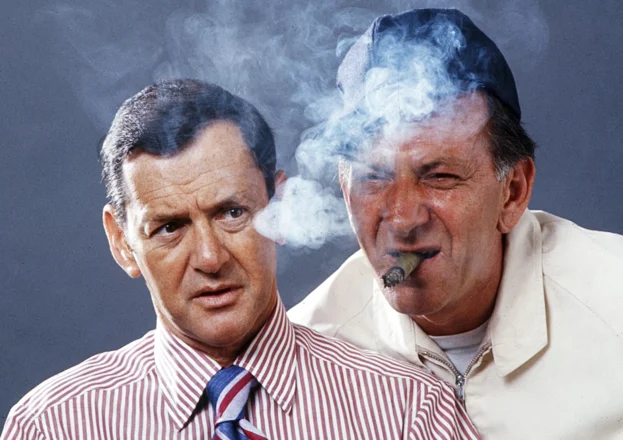
Tony Randall and Jack Klugman brought Neil Simon’s mismatched roommates to television perfection as the fastidious photographer Felix Unger and the slovenly sportswriter Oscar Madison. Their opposing personalities—Felix with his allergies, cleaning obsessions, and precise nature versus Oscar’s cigar-smoking, poker-playing lifestyle—created comedy gold that never felt forced or contrived. The simple premise of two divorced men sharing an apartment became the foundation for one of television’s most beloved dynamics, proving that genuine character-based comedy never grows old. It’s no wonder The Digital Bits still remembers the legacy of this series well after its 50th anniversary.
The brilliance of their relationship was how it evolved from mere annoyance to a deep friendship that neither would readily admit to valuing. Remember Felix’s sinus-clearing routine that drove Oscar crazy, or Oscar’s card games that left the apartment in a state that sent Felix into cleaning frenzies? Behind their constant bickering was a relationship that helped both men navigate their post-divorce lives with a substitute family neither expected to find. Their perfectly delivered barbs became so quotable that many of us still use them as shorthand in our own relationships when discussing neat-freak or messy tendencies.
4. The Smothers Brothers
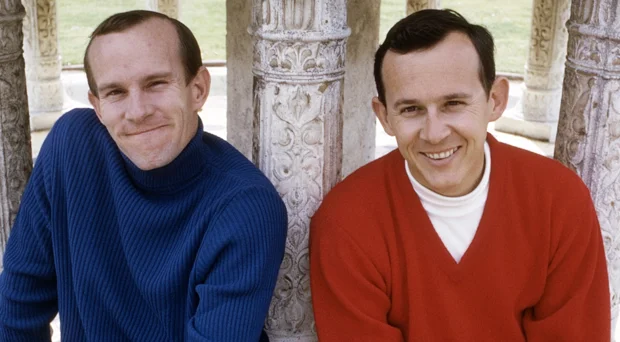
Tom and Dick Smothers combined folk music with comedy to create a uniquely subversive variety show that pushed the boundaries of television in the late ’60s and early ’70s. Their seemingly innocent sibling rivalry—with Tom playing the slow-witted brother constantly interrupted by straight-man Dick—disguised sharp political satire that eventually led to their infamous cancellation despite top ratings. The brothers’ trademark “Mom always liked you best!” routine belied their sophisticated understanding of how to use gentle comedy to deliver sharp social commentary.
Their musical talent added another dimension to their comedy, with folk songs often dissolving into arguments or comedic asides that showcased their impeccable timing. The brilliance of the Smothers Brothers lay in how they appeared harmless while sneaking controversial material past network censors, becoming unexpected counterculture heroes. Their influence extended far beyond their abbreviated television run, inspiring generations of comedians to use humor as a vehicle for social commentary while demonstrating how powerful a simple brotherly dynamic could be when performed with authentic affection and perfect comedic timing.
5. Captain and Tennille
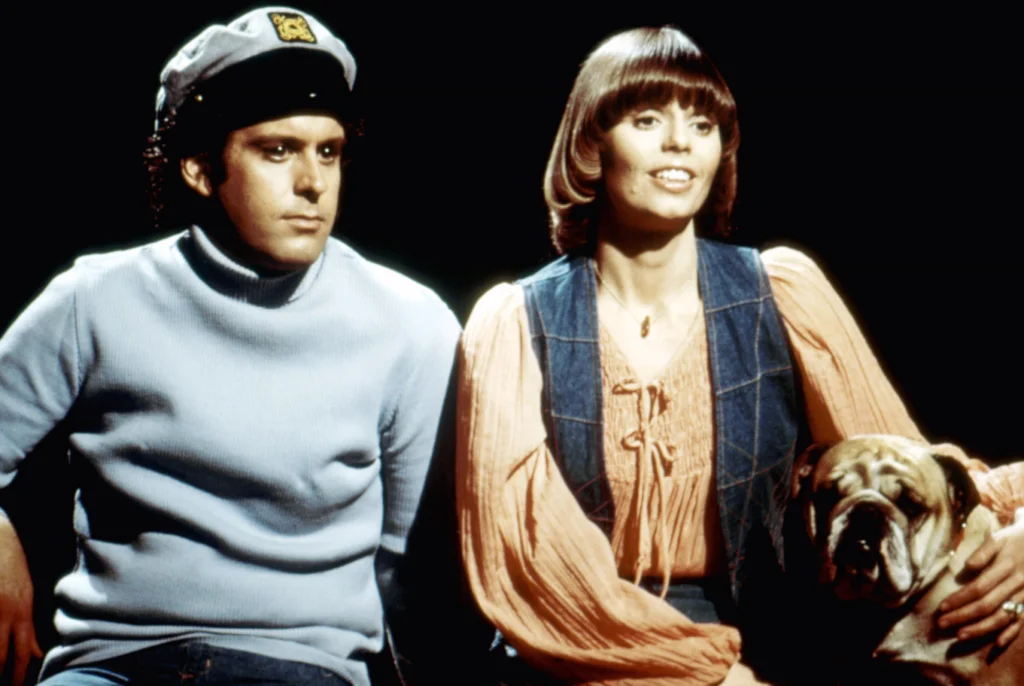
Daryl Dragon and Toni Tennille were much more than the musical duo behind hits like “Love Will Keep Us Together”—they were a charming comedy team whose 1976-77 variety show showcased their endearing relationship. Captain (always in his trademark nautical hat) played the straight man to Toni’s bubbly, affectionate personality, with her famous “Mmm, Captain!” becoming a catchphrase that captured their playful dynamic. Their genuine off-screen marriage (which lasted 39 years) translated into authentic chemistry that made their scripted comedy segments feel warm and natural.
The contrast between the stoic, nearly silent Captain and the expressive, chatty Tennille created a comedic tension that complemented their musical performances perfectly. Their variety show featured comedy skits, musical numbers, and guest stars, but it was always the moments between the two hosts that viewers tuned in for each week. Though their television series was relatively short-lived, their playful banter and obvious affection for each other made them beloved figures who represented the wholesome side of ’70s entertainment.
6. Donny and Marie Osmond
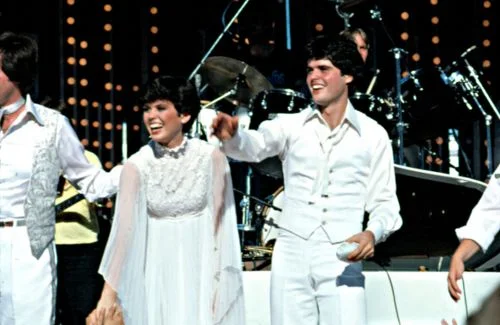
The “little bit country, little bit rock and roll” siblings brought their squeaky-clean charm to Friday nights with their variety show that showcased both their musical talents and surprisingly effective comedy chops. Donny and Marie’s mock rivalry and gentle teasing of each other’s performance styles became the scaffolding for a show that appealed to multiple generations. Their comedy sketches often played on their public personas—Marie’s dolls and Donny’s purple socks were frequent targets—while their obvious sibling affection kept the jokes from ever feeling mean-spirited.
The Osmonds managed to bring family-friendly humor to variety television without seeming saccharine, largely because their sibling dynamic was so relatable. Remember those ice skating segments where they would glide around the rink while trading barbs about each other’s latest performances or fashion choices? Their ability to laugh at themselves and their wholesome image made them appealing even to viewers who weren’t fans of their music. The skills they developed during this show served them well throughout their careers, culminating in their successful Las Vegas residency decades later where they continued to prove that sibling harmony (and humor) never goes out of style.
7. Chico and the Man
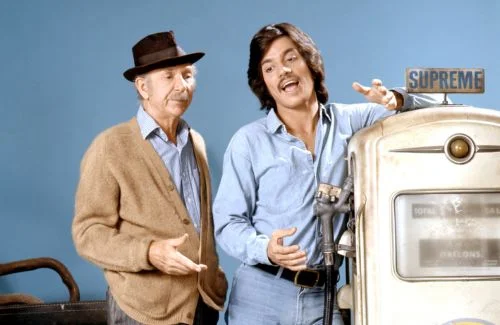
Freddie Prinze and Jack Albertson created cross-generational, cross-cultural comedy magic as Chico Rodriguez and Ed Brown, the eager young Chicano mechanic and the cantankerous garage owner. Their initially antagonistic relationship developed into a touching surrogate father-son dynamic that broke new ground for network television in the mid-70s. Prinze’s energetic delivery of “Looking good!” contrasted perfectly with Albertson’s grumpy “Feel like dynamite” responses, creating a catchphrase exchange that viewers eagerly anticipated each week.
The comedy between these two masterfully addressed racial tensions and generational gaps through humor that found common ground rather than exploiting differences. Watching Ed’s crusty exterior slowly crack under Chico’s persistent optimism gave the series heart beneath its laugh-out-loud moments. The tragic death of Prinze during the show’s third season remains one of television’s most heartbreaking moments, ending a partnership that was redefining comedy with its blend of social conscience and genuine warmth.
8. Tony Randall and Jack Klugman (The Tonight Show)
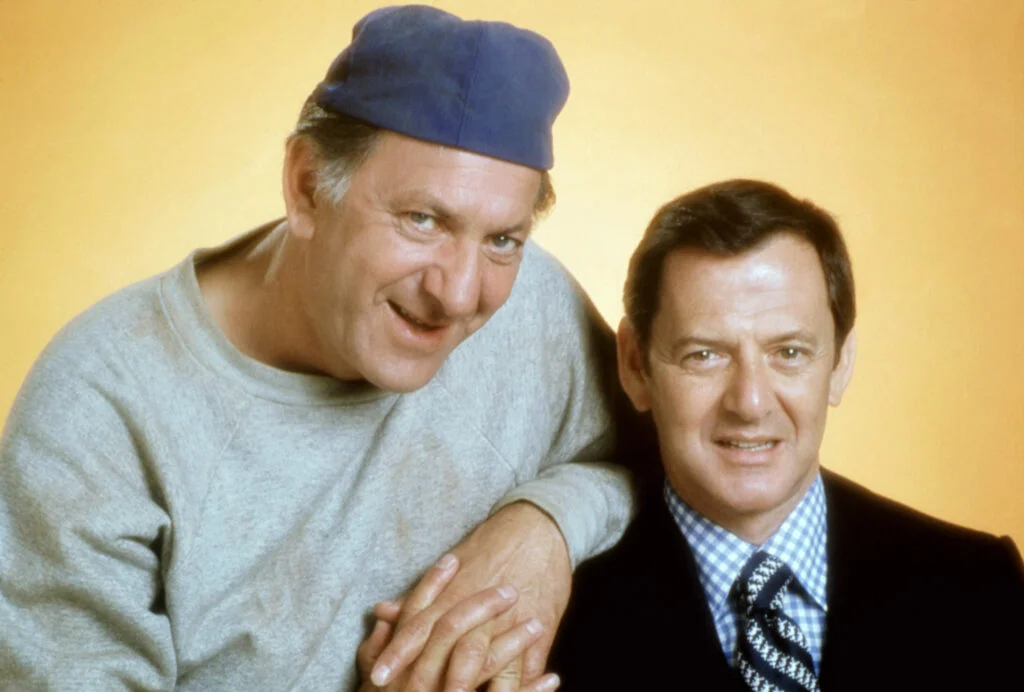
Beyond their “Odd Couple” personas, Randall and Klugman became favorite recurring guests on Johnny Carson’s “Tonight Show,” where their real-life friendship and contrasting personalities made for television gold whenever they appeared together. Randall’s cultured, theatrical persona played brilliantly against Klugman’s down-to-earth, gravelly-voiced stories, creating unscripted banter that often left Carson in the role of amused bystander. Their appearances became so popular that Carson would sometimes bring them both on specifically to interact with each other, knowing their natural chemistry would guarantee entertaining television.
These appearances revealed how much of their “Odd Couple” dynamic was rooted in their authentic personalities, with Randall’s precise language and refined tastes contrasting hilariously with Klugman’s straightforward, no-nonsense approach to life. Remember how Randall would correct Klugman’s grammar or pronunciation, while Klugman would roll his eyes and tell another gambling story that would have Randall aghast? Their genuine affection for each other always shone through the teasing, giving viewers a glimpse into a real friendship that was every bit as entertaining as their scripted relationship.
9. Carol Burnett and Harvey Korman
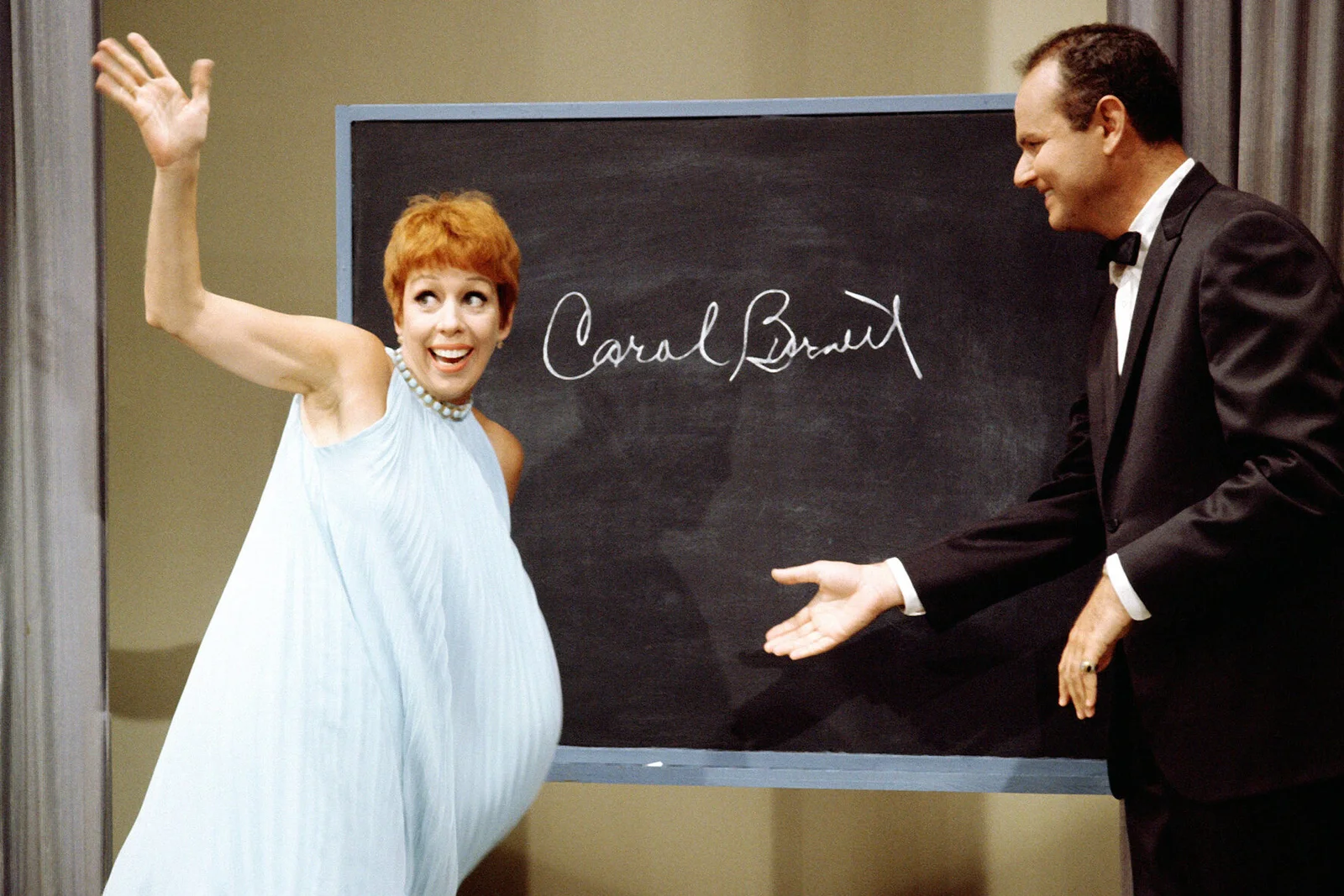
Though part of the larger ensemble of “The Carol Burnett Show,” Burnett and Korman developed a special comedic relationship that produced some of the variety show’s most memorable moments. Korman’s attempts to maintain his professional composure while Burnett deployed her arsenal of outrageous characters created tension that frequently resulted in his legendary on-camera breaks. Their Gone with the Wind parody “Went with the Wind”—featuring Burnett’s curtain-rod dress as perhaps the most iconic costume joke in television history—showcased their perfect timing and commitment to the bit.
What made their partnership special was how they elevated each other’s performances, with Korman’s straight-man gravitas making Burnett’s characters more hilarious, while her fearless comedy gave him permission to be increasingly outrageous. Their dynamic worked because both were willing to make themselves the butt of jokes, with neither concerned about looking dignified or cool. The genuine joy they took in performing together was contagious, pulling viewers into their private game of trying to make each other laugh—a contest Burnett usually won, much to the audience’s delight.
10. Bob and Emily Hartley (The Bob Newhart Show)
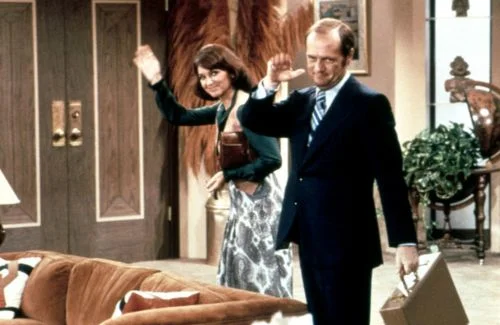
Bob Newhart and Suzanne Pleshette created television’s most realistically loving and witty married couple as psychologist Bob Hartley and his teacher wife Emily. Their dinner conversations and bedroom scenes featured the kind of naturalistic dialogue and perfect timing that made viewers feel like they were eavesdropping on a real marriage between two genuinely intelligent people. Newhart’s trademark stammer and deadpan reactions played beautifully against Pleshette’s smoky voice and sharp comebacks, creating a relationship where neither partner dominated and both contributed equally to the comedy.
What set the Hartleys apart from other TV couples was how their humor seemed to flow from authentic intelligence rather than setup-punchline structures. Remember those end-of-day debriefs where they’d compare professional war stories—Bob’s neurotic patients versus Emily’s unruly students—with equal weight given to both careers? Their chemistry was so convincing that when Newhart ended his later series “Newhart” by revealing it had all been Bob Hartley’s dream and waking up next to Pleshette as Emily, audiences erupted in one of television’s most appreciative responses to a finale twist that acknowledged the special relationship these actors had created.
11. Sonny and Cher
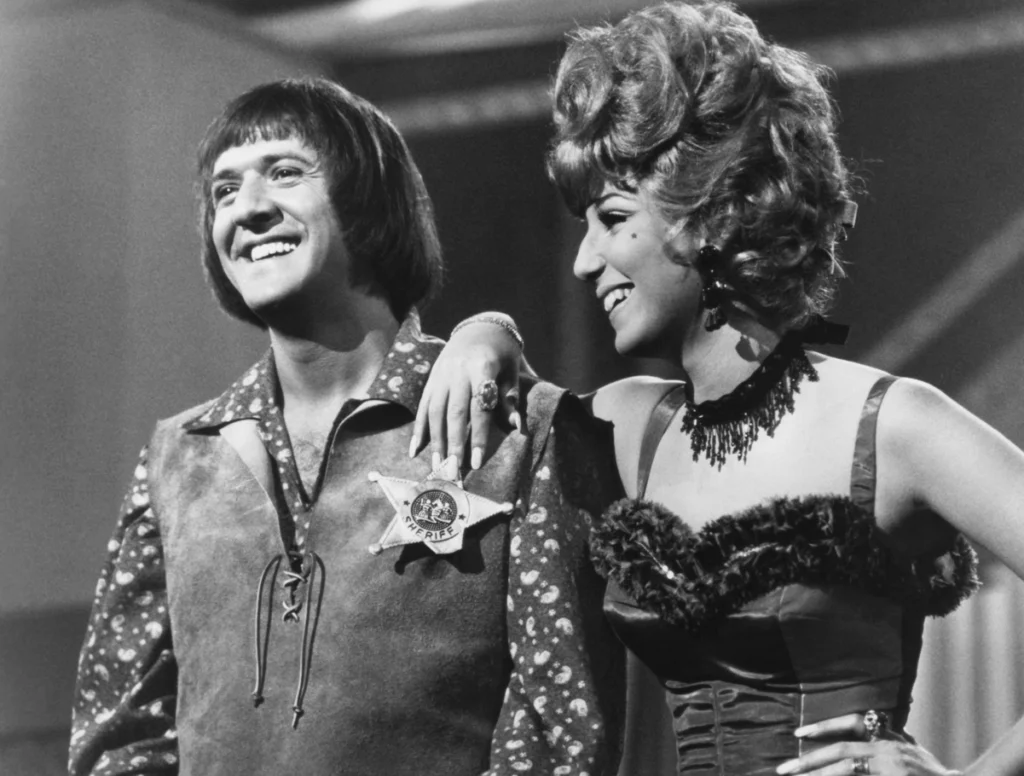
Before their divorce played out in tabloid headlines, Sonny Bono and Cher brought their unique chemistry to television with a variety show built around their musical performances and surprisingly effective comedy skits. Their height difference (Cher towering over Sonny) and contrasting personalities (his eager-to-please enthusiasm versus her deadpan zingers) created visual and verbal comedy that felt fresh in the variety show landscape. The standard format of their show always built to the signature closing number “I Got You Babe,” but it was often their opening banter—with Cher delivering cutting remarks about Sonny’s appearance or intelligence—that viewers most eagerly anticipated.
What made their comedy work was how it played against the romantic image established by their music, revealing a more complex relationship that somehow made both partners more likable. Cher’s withering comebacks never seemed truly mean because Sonny so clearly adored her, while his constant optimism prevented her cool persona from seeming aloof. The continued success of their show even after their personal relationship had deteriorated demonstrated how powerful their professional chemistry remained, with audiences separating the performers from their increasingly complicated personal lives.
12. Moore and Livingston (Maude)
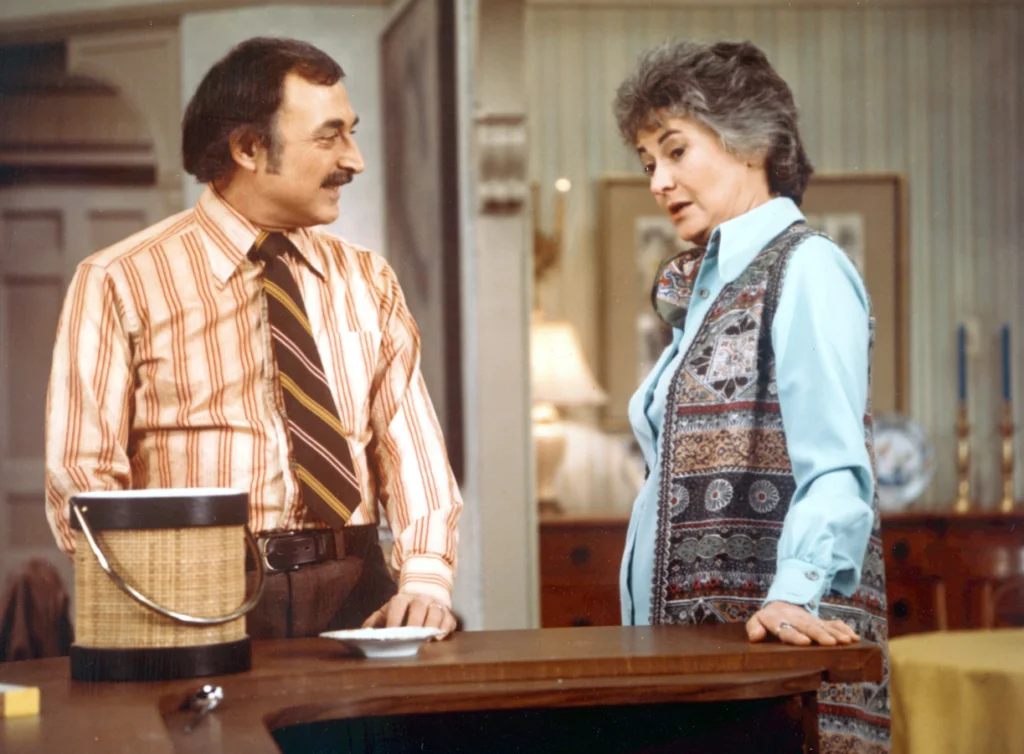
Bill Macy and Bea Arthur created television history as Walter and Maude Findlay, a middle-aged couple navigating changing social values with wildly different perspectives. Arthur’s commanding presence and feminist convictions as the outspoken Maude contrasted hilariously with Macy’s beleaguered Walter, creating a dynamic where his exasperated “Maude, God’ll getcha for that!” became an audience catchphrase. Their comedy often centered around serious issues of the day—Walter’s traditional values clashing with Maude’s progressive stances—giving their banter substance beyond mere domestic squabbles.
The brilliance of their relationship was how it flipped traditional gender dynamics while still making both characters sympathetic and funny rather than political caricatures. Remember Walter’s drinking problem storyline, which somehow balanced comedy with sensitivity, or Maude’s mendacity episodes where her principles warred with her insecurities? Their comedy worked because beneath their constant verbal sparring was a relationship built on genuine affection and respect, allowing them to tackle controversial topics with humor that never felt preachy. Walter and Maude represented the changing American marriage in an era of shifting gender roles, making us laugh while subtly encouraging us to examine our own relationships.
These comedy duos didn’t just entertain us—they shaped how an entire generation understood relationships, communication, and the power of finding humor in our differences. Their chemistry wasn’t manufactured by focus groups or carefully crafted by teams of writers; it sprang from authentic connections between performers who knew instinctively how to bring out the best in each other. While today’s television landscape offers more choices than we could have imagined in the rabbit-ear antenna days, there’s something special about those partnerships that could keep us laughing with nothing but their words, expressions, and impeccable timing. Perhaps what we’re really nostalgic for isn’t just these specific duos, but for entertainment that trusted audiences to appreciate the simple magic of watching two people who were perfectly in sync making each other laugh.


